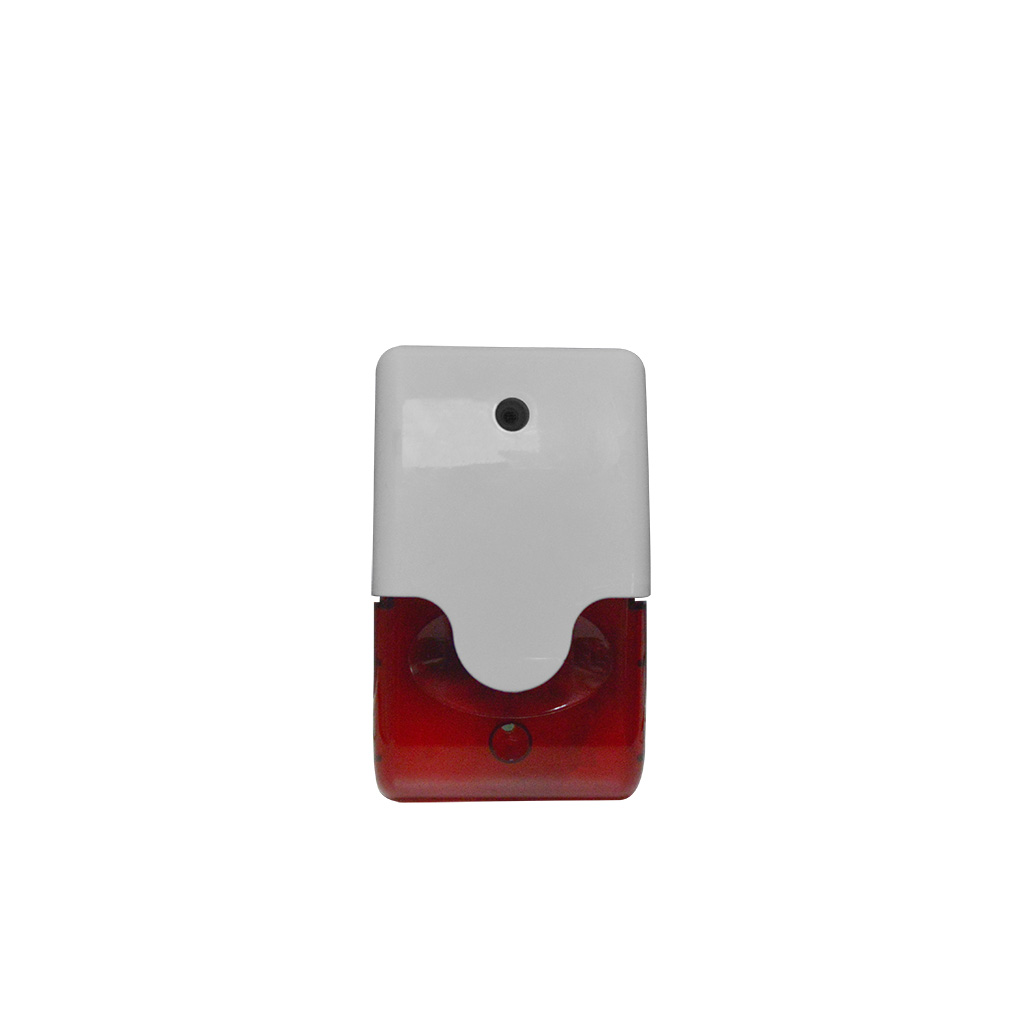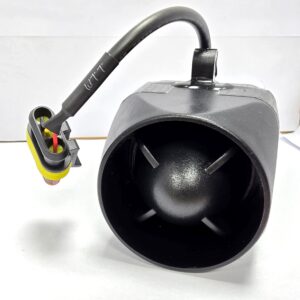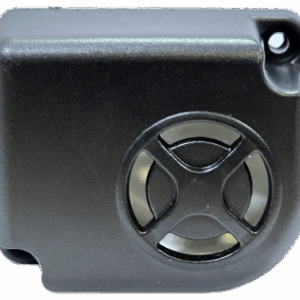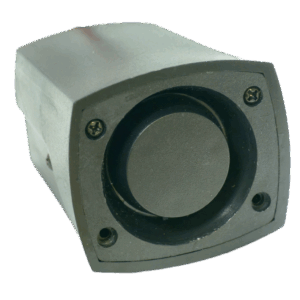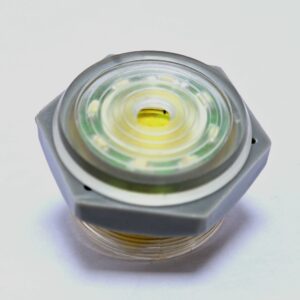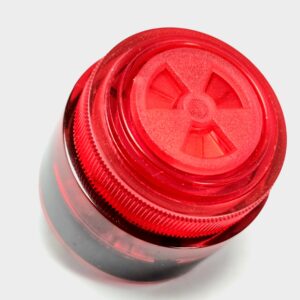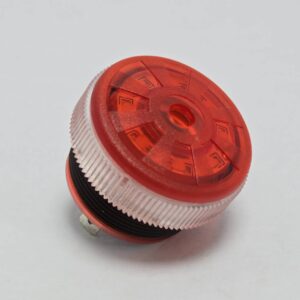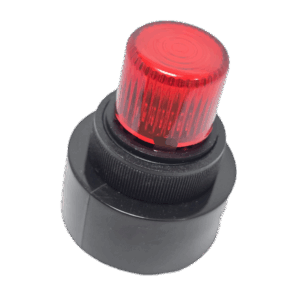
Siren
Piezo buzzer is voltage sensitive and insensitive to current. Its SPL (Sound Output Level) increases positively with voltage under maximum voltage. Usually piezo buzzer needs at least 3V to produce enough SPL. As piezo plates can stand up to very high voltages, ex: 20V~30V, it means that the user is encouraged to boost input voltage to get louder sound. Siren, a type of piezo buzzer, plays out specific alerting tunes. The tunes are usually generated internally by the siren’s default oscillation circuit, which is fed by VDC power.
Piezo buzzer is better at giving out higher resonant frequency, for example 4,000hz sound. Its sound quality is harsh and it’s intended to alert the user. The user is discouraged to use a piezo buzzer to play low frequencies, because low frequencies are not alerting enough and their sound volume is relatively low.
Piezo buzzer is resistant to shocks and is robust, which is suited in harsh environments. Thanks to the concise and compact design, its weight is also light. Furthermore, as the piezo buzzer is capacitive, so the consumption current is low, which is best suited in power-saving applications.
Piezo alarms or horn speakers reproduce high volumes than most of the buzzer counterparts. Piezo alarms are usually indicators and mounted on large machines. Indicators operate on DC and drive predetermined oscillation circuit to produce fixed audio content, which can be chimes, howls, bell sound or siren…etc.
Horn speaker are sometimes compression drivers that work on electro-magnetic mechanism. The acoustic impedance at the source is usually high, and to increase transmission efficiency and decrease loss, there’s probably a horn attached in front. The horn has a throat and mouth larger than the throat, plus a curve that spreads outward.
These high sound volume emitters are sometimes used in security or broadcast application. So, they often have to meet UL standards, mainly as:
UL 217: Standard for smoke alarms. The sounder shall produce a minimum sound pressure level of 85 dBA at a distance of 3 meters in an anechoic chamber. The sounder shall produce a temporal-three pattern, which consists of three successive cycles of 0.5-second on and 0.5-second off pulses, followed by a 1.5-second off period. The sounder shall produce a sound frequency within the range of 3100 Hz to 3500 Hz, with a tolerance of ±10%
UL 864: Standard for control units and accessories for fire alarm systems. Sound pressure level: The sounder shall produce a minimum sound pressure level of 75 dBA at a distance of 10 feet in an anechoic chamber. Sound pattern: The sounder shall produce a temporal-three pattern, which consists of three successive cycles of 0.5-second on and 0.5-second off pulses, followed by a 1.5-second off period. Sound frequency: The sounder shall produce a sound frequency within the range of 800 Hz to 1000 Hz, with a tolerance of ±10%
There are also other UL clauses for reference.
• UL 2017: This standard covers general-purpose signaling devices and systems for use in various applications such as burglary protection, fire protection, and process monitoring. This standard specifies that the sound output of a signaling device shall be at least 15 dBA above the ambient noise level at a distance of 10 feet
• UL 464: This standard covers audible signal appliances for fire protective signaling systems. This standard specifies that the sound output of an audible signal appliance shall be at least 70 dBA at a distance of 10 feet in an anechoic chamber. The standard also specifies the sound frequency range and sound pattern requirements for different types of audible signal appliances, such as bells, horns, sirens, speakers, and chimes
• UL 268: This standard covers smoke detectors for fire alarm systems. This standard specifies that the sound output of a smoke detector with an integral alarm shall be at least 85 dBA at a distance of 10 feet in an anechoic chamber
Read more

